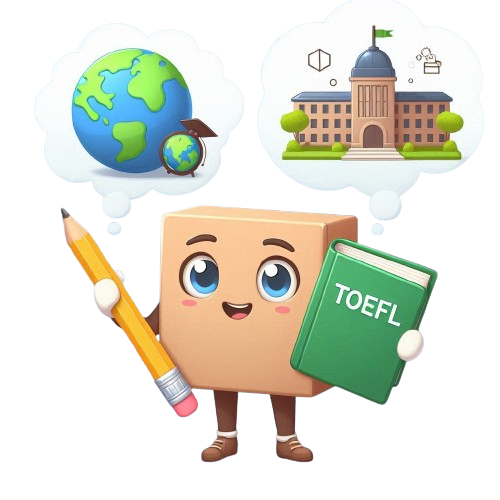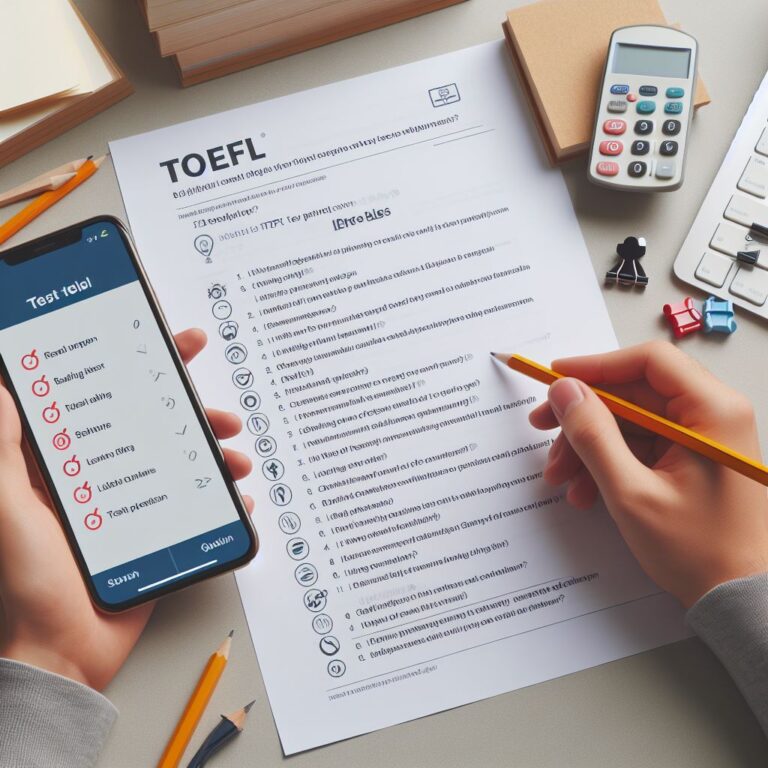What is TOEFL?

Key Points:
TOEFL: The Test of English as a Foreign Language, or TOEFL, is a standardized test designed to measure the English language proficiency of non-native speakers wishing to enroll in English-speaking universities. The TOEFL test can be taken at a center (TOEFL iBT) or at home (TOEFL iBT Home Edition).
Score Requirements for Universities: A good TOEFL score is generally considered above 100, which increases the chances of admission to top universities. Most universities require a minimum score of 80, with elite institutions often requiring scores above 100.
TOEFL Score Validity and Reporting: TOEFL scores are valid for two years, and ETS sends scores to four universities of the candidate’s choice. The scorecard is available approximately 6 days after the test date, and additional reports can be ordered for a fee.
What you will find in this guide:
TOEFL Test
The TOEFL exam is recognized globally, with more than 10,000 colleges, universities, and agencies in over 150 countries accepting TOEFL scores4. Whether you’re applying for a study visa, a scholarship, or admission into an English-speaking university, the TOEFL exam can open doors for you.
The TOEFL iBT test, which stands for Internet-Based Test, assesses your ability to use and understand English at the university level4. It evaluates how well you can integrate your listening, reading, speaking, and writing skills to perform academic tasks34. The test is divided into four sections: Reading, Listening, Speaking, and Writing3. Each section is designed to test your proficiency in English in a comprehensive manner.
In this post, we will delve deeper into each aspect of the TOEFL exam. We’ll discuss the structure of the test, preparation strategies, scoring system, and what to expect on the test day. We’ll also explore how to interpret your scores after the test. My aim is to provide you with a detailed guide that will help you navigate your TOEFL journey with confidence.
So, whether you’re just starting your TOEFL preparation or looking for strategies to boost your score, this guide is for you. Let’s embark on this exciting journey together! Stay tuned, and let’s demystify the TOEFL exam.

Different Types of TOEFL
There are two main types of TOEFL exams: the TOEFL iBT (Internet-Based Test) and the TOEFL PBT (Paper-Based Test)1234.
TOEFL iBT (Internet-Based Test): This is the most common type of TOEFL exam1. It consists of four sections: Reading, Listening, Speaking, and Writing1. The total test takes just under 2 hours to complete5. As of July 26, 2023, the duration of the examination has been reduced to 2 hours from a 3-hour long test1. The TOEFL iBT test is offered more than 50 times a year and is administered online via the internet1.
TOEFL PBT (Paper-Based Test): This version of the TOEFL exam used to be conducted in offline mode1. It was only offered for those locations where the internet was not available1. However, as of April 2021, the TOEFL PBT has been discontinued1.
In addition to these, there are other TOEFL tests such as the TOEFL Junior and the Institutional Testing Program (ITP), but these are less common1.
Please note that the TOEFL iBT test also has a Home Edition1. This version of the test allows you to take the TOEFL test from the comfort of your own home1. It is the same as the TOEFL iBT test in terms of content, format, and on-screen experience12, and it is monitored online by a human proctor through ProctorU1. The TOEFL iBT Home Edition is a great option for students who prefer to take the exam from the comfort of their own homes12. This version of the test was introduced as a response to the COVID-19 pandemic and is now available worldwide12.
How are TOEFL Scores Calculated
Understanding the scoring system of the TOEFL iBT test is crucial for your preparation. The TOEFL iBT test employs a range of 0 to 30 for each section, resulting in a maximum total score of 12012. The scores are categorized into different proficiency levels: novice (0-9), intermediate (10-17), competent (18-25), and fluent (26-30)2.
Each of the four sections of the exam – Reading, Listening, Speaking, and Writing – is worth 30 points13. After you take the test, you will receive four scaled section scores13. These scores are then added together to form your overall score13. For example, if you score 26 in reading, 25 in listening, 28 in speaking, and 25 in writing, your total score would be 26 + 25 + 28 + 25 = 1043.
It’s important to note that there is no pass or fail in the TOEFL test13. Each institution or agency sets its own score requirements13. Therefore, it’s essential to check the score requirements of the institutions you’re applying to.
The Reading and Listening sections are scored by computer, while the Speaking and Writing sections are scored by a combination of AI scoring and multiple, highly trained human raters1. This ensures a complete and accurate picture of your ability1.
After taking the test, you will receive an email when your TOEFL scores are ready3. You will be able to access them online via your ETS account approximately 6 days after your test date3. You will be able to download a PDF of your score report 8 days after your test date3.

What is a good TOEFL Score?
A good score on the TOEFL iBT test can vary depending on the requirements of the specific institution or program you’re applying to12. However, many experts suggest that a score of 100 or above on the TOEFL iBT test is generally considered good24. If you’re aiming for a top-tier program, a higher TOEFL score can significantly strengthen your application4. A score in the range of 80 to 90 is considered average, but it’s important to note that requirements can vary greatly among institutions4.
The average TOEFL score is around 90, and it may rotate around 85 to 95. Scoring above 100 is generally considered a good score on TOEFL. Universities generally require this TOEFL score range as this states that the candidate has a good hold of English. Whereas, if you achieve in the range of 100 to 110, your chances of getting admitted to the top universities increase. Though it should be noted that there are no good or bad scores in TOEFL. The TOEFL Score validity is for 2 years.
Here are the TOEFL cutoffs for some of the top universities for understanding what a good score is acceptable for different colleges:
- Harvard University: 100 – 105
- Columbia University: 100
- California Institute of Technology: 78
- UC Berkeley: 100
- Duke University: 90
- Brown University: 100 or above
- University of California, Los Angeles: 87
- University of Michigan-Ann Arbor: 88 – 100; 23 minimum score in each section






